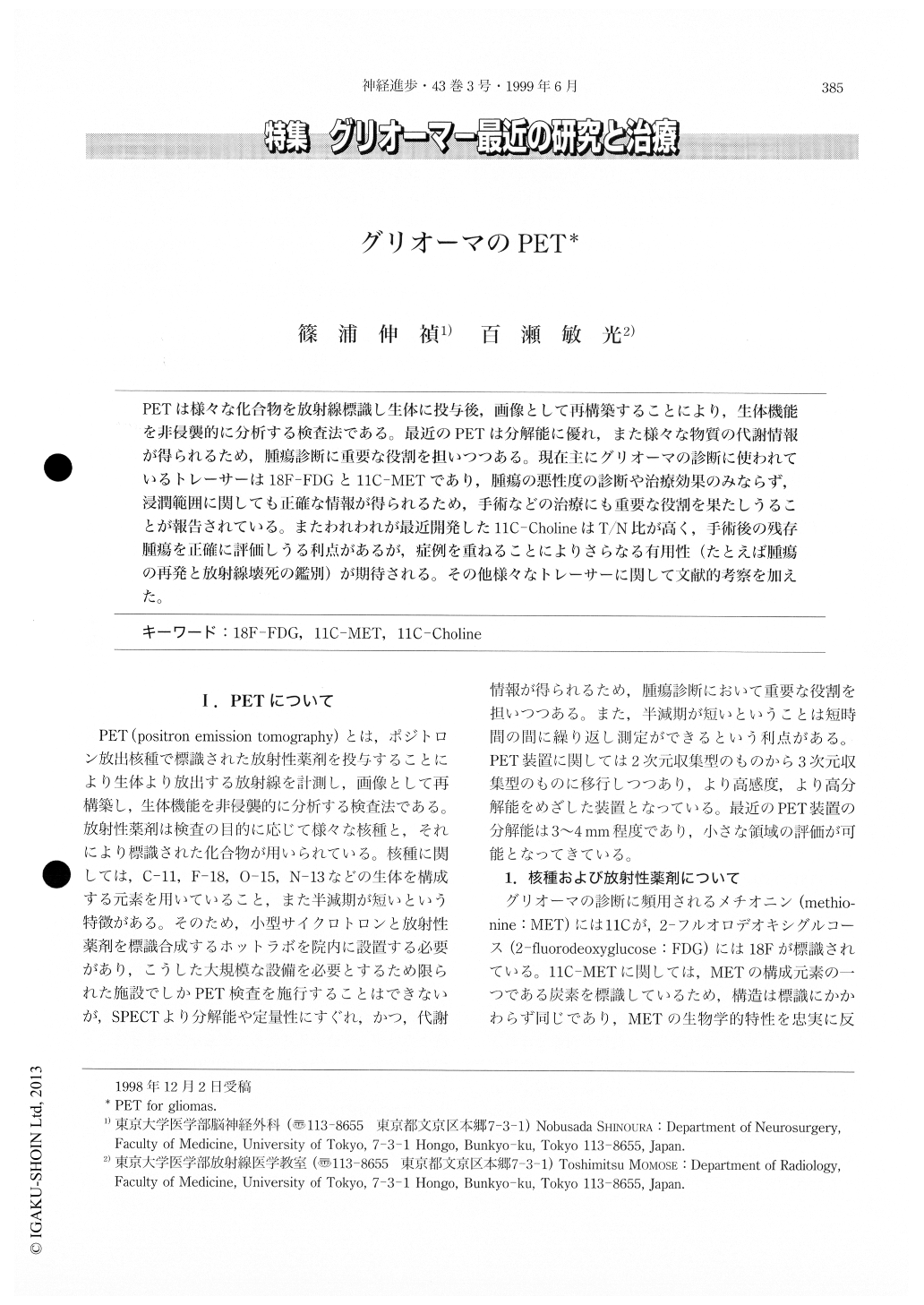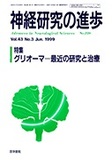Japanese
English
- 有料閲覧
- Abstract 文献概要
- 1ページ目 Look Inside
PETは様々な化合物を放射線標識し生体に投与後,画像として再構築することにより,生体機能を非侵襲的に分析する検査法である。最近のPETは分解能に優れ,また様々な物質の代謝情報が得られるため,腫瘍診断に重要な役割を担いつつある。現在主にグリオーマの診断に使われているトレーサーは18F-FDGと11C-METであり,腫瘍の悪性度の診断や治療効果のみならず,浸潤範囲に関しても正確な情報が得られるため,手術などの治療にも重要な役割を果たしうることが報告されている。またわれわれが最近開発した11C-CholineはT/N比が高く,手術後の残存腫瘍を正確に評価しうる利点があるが,症例を重ねることによりさらなる有用性(たとえば腫瘍の再発と放射線壊死の鑑別)が期待される。その他様々なトレーサーに関して文献的考察を加えた。
CT and MRI imaging, which essentially provide the physical status of tissue, give important information on the histopathology and extent of gliomas. On the contrary, PET is a biochemical and physiologic technology and is beginning to give more precise information about gliomas, which allows the distinction between gliomas and normal brains, the supply of histopathologic and prognostic information, and the assessment of the response to the therapy. To date, fluorine-18fluorodeoxyglucose (FDG) and 11C-methionine (MET) are widely used PET tracers for gliomas. Recent studies have demonstrated that the degree of the increase in the glycolytic rate in gliomas, as measured with FDG, is correlated with the histologic grade and prognosis. However, MET is superior to FDG in delineation of the boundaries of gliomas, because MET sometimes shows the lesion invaded by gliomas, which is usually wider than that detected by CT or MRI imaging. Finally, we discussed about 11C-Choline PET, in which T/N ratio of gliomas was remarkably high, and residual tumors were easily distinguished from surrounding normal tissues after surgery. In conclusion, it is important to know the advantage of individual PET tracers and combine a couple of tracers to obtain accurate information about gliomas.

Copyright © 1999, Igaku-Shoin Ltd. All rights reserved.


